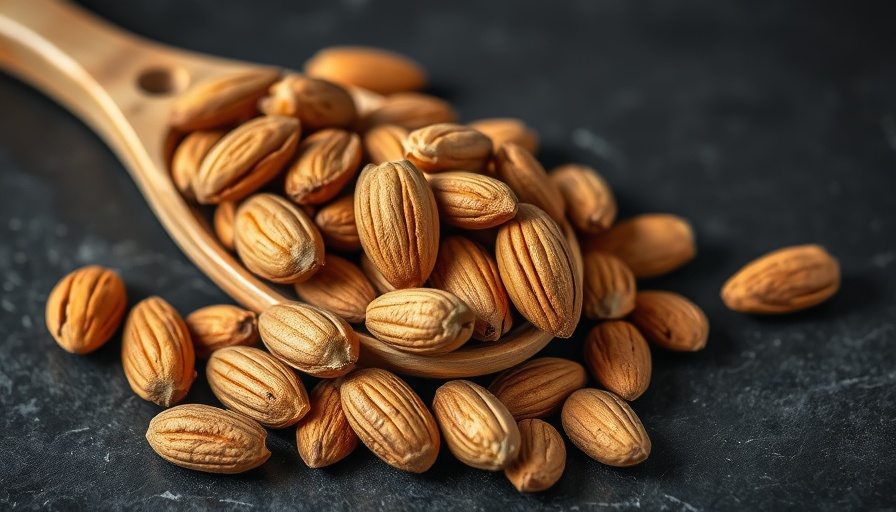
Unlocking the Power of Almonds: Delicious Health Benefits
For the health-conscious, especially men aged 35-55, integrating almonds into your daily diet could be a game-changer. Recent studies reveal that consuming over 60 grams of almonds a day may protect our DNA and significantly diminish oxidative damage, which can lead to various chronic diseases. Almonds are not just nutrient-dense; they’re a delicious way to promote wellness!
Understanding DNA Protection and Oxidative Damage
Oxidative stress occurs when there’s an imbalance between free radicals and antioxidants in our bodies. This stress can wreak havoc on DNA, leading to health issues including heart disease and cancer. Researchers have found that almonds, rich in antioxidants, vitamin E, and healthy fats, can combat these harmful effects. By snacking on a handful of almonds daily, you might just bolster your body’s defenses.
The Nutritional Breakdown: What Makes Almonds a Superfood?
Almonds are packed with essential nutrients. A 60-gram serving contains about 12 grams of protein, fiber, vitamin E, and magnesium. These components work synergistically to reduce inflammation and improve heart health. Fitness enthusiasts may find almonds especially beneficial as a pre- or post-workout snack due to their protein and healthy fat content, which can help muscle recovery.
Incorporating Almonds into Your Diet: Practical Tips
Making almonds a part of your daily routine doesn’t have to be complicated. Here are some simple yet effective ways to enjoy almonds:
- Snack Idea: Keep a small bag of almonds handy for a nutritious on-the-go snack. This not only curbs hunger but boosts your energy levels without the crash.
- Breakfast Buddy: Toss almonds into your morning oatmeal or yogurt for an added crunch and flavor that will help you stay full longer.
- Nutty Desserts: Use almond butter as a base for delicious smoothies or healthy dessert recipes to satisfy sweet cravings while keeping it nutritious.
The Broader Impact of Healthy Snacking
Integrating healthy snacks like almonds not only boosts individual health but can also set a trend in communities. As more people adopt healthier eating patterns, there’s a ripple effect that promotes better overall public health. Encouraging peers to make similar choices fosters a supportive environment for everyone’s wellness goals.
Common Misconceptions About Nuts and Weight Gain
One common misconception is that eating nuts, including almonds, can lead to weight gain due to their caloric density. However, research shows that the fiber, protein, and healthy fats found in nuts can actually aid in weight management. Satisfying hunger signals with almonds can help prevent overeating later in the day.
Future Predictions for Nut Consumption
Looking ahead, the trend appears promising for nuts and seeds in health-conscious diets. The growing awareness about oxidative stress and its implications on health is encouraging more individuals to include nutrient-dense snacks in their meals. Almond farmers might also experience a boost in demand as consumption increases.
Conclusion: Take Charge of Your Health with Almonds
Incorporating over 60 grams of almonds into your daily routine can nutritionally empower your health and enhance your lifestyle. Whether you’re an athlete needing energy, a professional dealing with daily stress, or simply focused on overall wellness, almonds offer a delicious and effective way to support your journey. Let’s embrace these little powerhouses and watch as they positively influence our health!
Are you ready to unlock the amazing health benefits of almonds? Start today by incorporating them into your meals! Your body will thank you.
 Add Row
Add Row  Add
Add 




Write A Comment